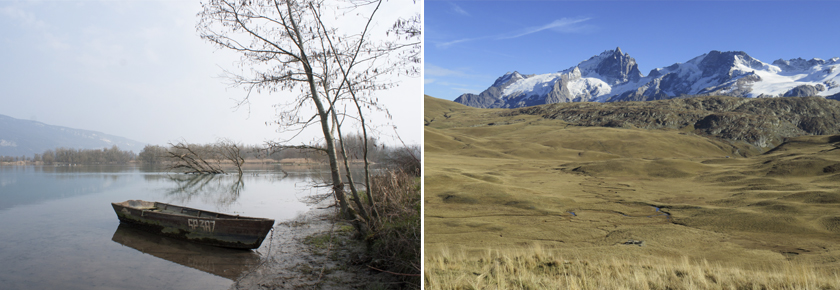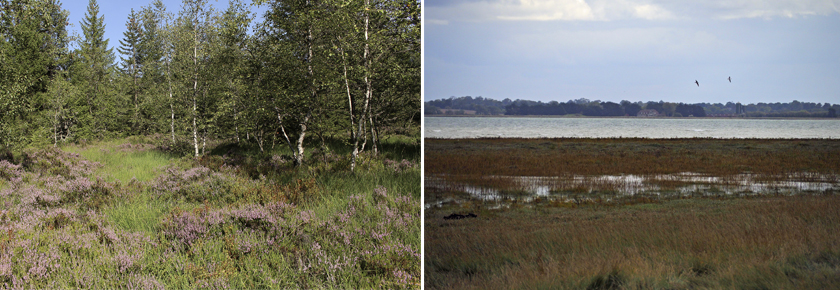
The national strategy for protected areas presents ambitions and an action programme for 2030, unified for the first time for all protected areas and natural land and marine heritage, in metropolitan France and the overseas territories.
By 2022, this strategy aims to cover at least 30% of the national land territory (metropolitan and overseas territories) and marine waters under jurisdiction or sovereignty with protected areas and 10% under high-level protection.
This new vision for the period 2020-2030 deals with the reinforcement and extension of the network, but also with qualitative management issues common to all types of protected areas or with mitigation and adaptation to climate change.
The National Strategy for Protected Areas 2030, which includes 18 measures, is implemented through three triennial national action plans. These action plans are adapted and supplemented by the territories in metropolitan and overseas France (regions, maritime fa�ades, ultra-marine basins, voluntary overseas collectivities) in a co-construction process to take into account the specificities and respond to the challenges of each territory.
The Ministry of Ecological Transition has mobilised the OFB for the development and implementation of this strategy, which, with the scientific and technical support of UMS PatriNat, will ensure its coordination, monitoring and evaluation.
National Protected Areas Strategy 2030
Action Plan 2021-2023 of the National Protected Areas Strategy 2030
The National Protected Areas Strategy 2030 page on the OFB website

Parc national de La Réunion © A. Boyer (Yabalex)
Parc naturel marin du Cap Corse et de l'Agriate © J. Ichter
In 2010, the Parties to the Convention on Biological Diversity (CBD) adopted in Nagoya (Japan) the Strategic Plan for Biodiversity 2011-2020 and its 20 so-called Aichi Targets to ensure the loss of biodiversity. The extension and strengthening of the protected area network corresponds to Aichi target 11, which aimed to protect at least 17 % of terrestrial and inland water areas and 10 % of marine and coastal areas with protected areas.
France has transposed this international framework into its national biodiversity strategy (2011-2020) and has adopted two separate strategies for protected areas: the strategy of creation of protected areas, which aimed for the strong protection of 2% of terrestrial metropolitan territory, and the national strategy for the creation and management of marine protected areas (2012-2020).
The SCAP is a national strategy to improve the coherence, the representativeness and the efficiency of the metropolitan network of the ground protected areas by contributing to the preservation of the biodiversity, to the proper functioning of the ecosystems and to the improvement of the ecological network.
The elaboration and the implementation of this strategy establish(constitute) one of the priority measures of the Grenelle Environment, defined by the law n°2009-967 of August 3rd, 2009 (art 23) and reaffirmed very recently within the framework of the environmental conference on 2016: the next objectives of the SCAP (Publication of a report on the implementation of the SCAP and launch of a new patrimonial diagnosis) were so registered in conformance with the measure 11b of the roadmap for the ecological transition on 2016.
This undertaking is spearheaded by an ambitious policy of development of the areas protected network with the objective to place, by the horizon 2019, at least 2 % of the metropolitan landmass under strong protection status. The relative qualitative objective is that the network of protected areas is coherent, connected and representative of the protection of the natural heritage (biological and geologic).

Réserve naturelle nationale Haut-Rhône Français © R.Bogey & Arrêté de protection de biotope des Marais du Rif Tord © G. Janiseck
The SCAP is based on a national methodology and a national diagnosis of the natural heritage (fauna, flora and housing environments) and geologic coordinated by the National Museum of Natural History at the request of the Ministry of the environment, the energy and the sea. This methodology is validated under the aegis of a national steering committee associating in particular the representatives of administrator’s networks of natural spaces, socioeconomic structures and associations of environmental protection. The first diagnosis realized in 2009 allowed to identify the gaps of the national protected areas network and to bring to the foreground national priorities in terms of preservation of the natural heritage.
A national list of species and housing environments considered a priority for the establishment of new protected areas was built by mobilizing scientific experts of the MNHN, the FCBN, the OPIE and the ONEMA. This list is declined in the regional scale to consider at best the stakes in preservations. These regional appendices establish the base of implementation of the SCAP on the metropolitan territory.
The SCAP builds on an iterative process which requires to perpetuate the patrimonial diagnosis of the protected areas network and to review the national priorities of creation of protected areas according to its results and the advancement of scientific knowledge.

Arrêté de protection de biotope de la Tourbière du barrage du Gué de la Chaux © M. Pavlik & Réserve naturelle nationale du Domaine de Beaugillot © L.Léonard
Based on the SCAP's regional appendices, the government services in regions (DREAL) suggest projects of creation or extension of protected areas designated on the presence of species or housing environments of the SCAP's national list and that contribute to the achievement of the objective of the 2 %. These projects constitute the action plan of the SCAP. The first one was formalized in October 2013 and contains 336 eligible projects for the SCAP (among which 294 participate in the objective of the 2 %)
The implementation of the SCAP focuses on strong protection tools contributing in to achieving the objective of 2 %: Biotope, natural habitat or site of geological interest protection Order, Managed biological reserve, National, Regional and Corsican nature reserve and National park (heart area)
Within the framework of the improvement for the efficiency and the coherence of the national network of protected areas, other protection tools can be mobilized (land or agreement tools) but do not participate in the objective of 2 % such as sites of the Conservatoire of the coast, sites of the Conservatoire of natural spaces, Sensitive natural space, Forest of protection, Conservation area.
The INPN data is the reference for the natural heritage inventory information system (SINP) and the National Biodiversity Observatory (ONB) in terms of knowledge on biodiversity and geodiversity, as well as on protected areas. These data are used to monitor and evaluate the achievement of objectives in terms of network coherence and the state of conservation of natural heritage.
Thus, before launching the strategy, a diagnosis of the ecological representativeness of the terrestrial metropolitan protected area network was produced and adapted to the different regions. This work will continue to assist the territorial implementation of the strategy's action plan. INPN data is also being used to build, update and share indicators on protected areas. The evaluation system will have to be able to monitor the achievement of conservation objectives within the protected area network in relation to their responsibility at different levels of governance (national, regional, sea front, local authorities, etc.) and also at the eco-regional level for the terrestrial and marine domain.
Synthesis of the 2020 heritage diagnosis of the terrestrial metropolitan protected area network
Heritage diagnostic report 2020 of the terrestrial metropolitan protected area network